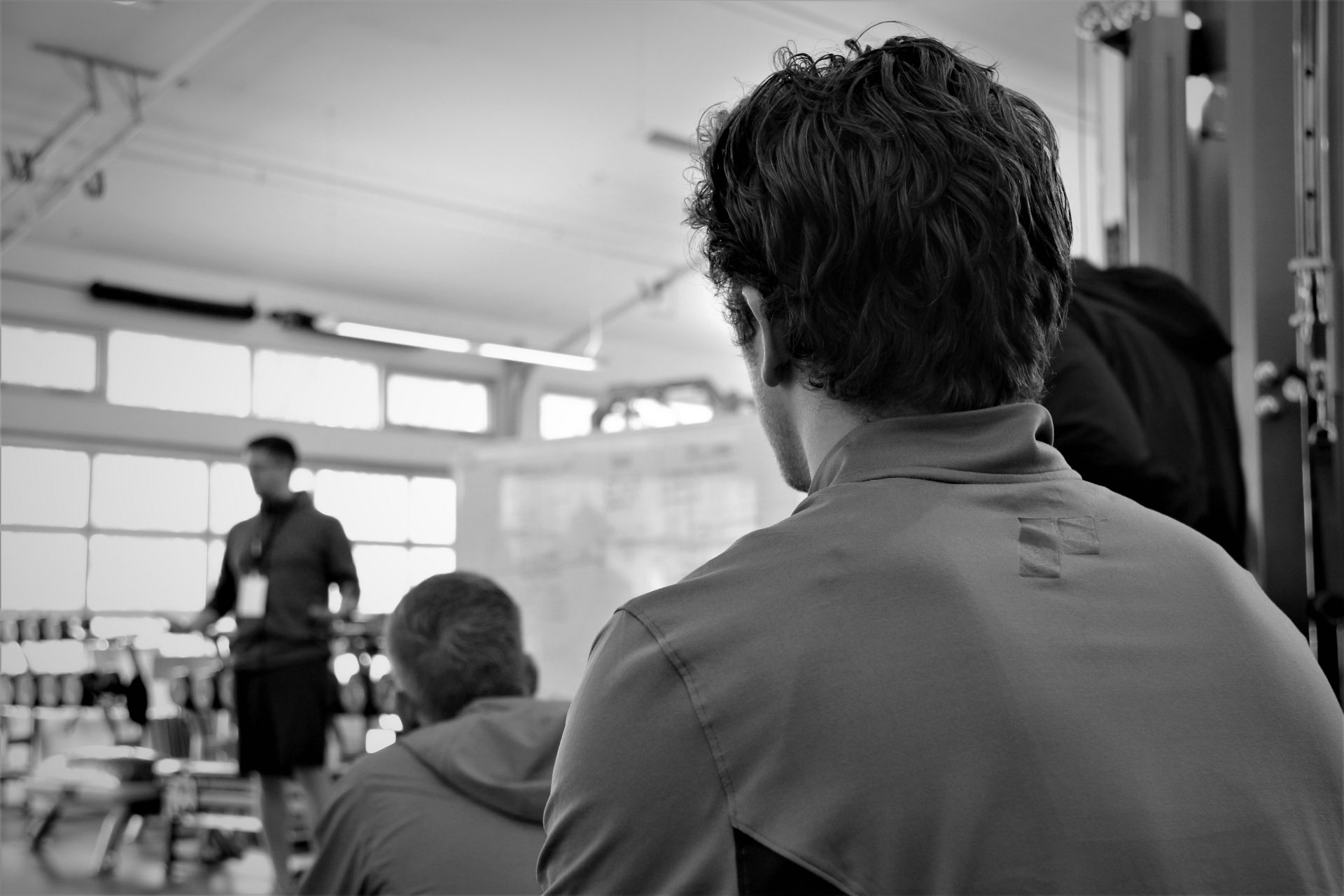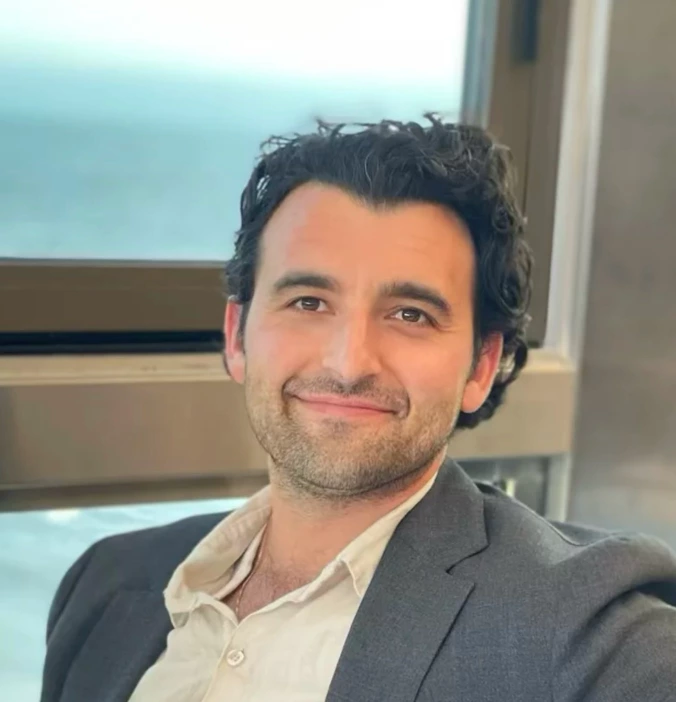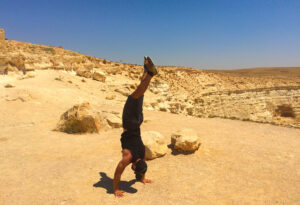(This series was originally published on Train Heroic)
In each of the first three parts of this series, we took aim at a distinct aspect of what’s commonly referred to collectively as “mindset”: self-awareness, self-regulation, and self-reflection. Now it’s time to wrap up our series by bringing these elements together. In this post, I’ll explain how you can combine these components to create a performance psychology approach that elevates your coaching craft and helps you better serve the athletes (clients, patients, or direct reports) in your charge.
Self-awareness, self-regulation, and self-reflection are foundational. Once you understand them, they open a gateway to all the other mental skills and give them purpose and direction. By beginning to explore the foundational mental skills, you will start to discover which come naturally and perhaps one or two that require more of your time and attention to be able to utilize effectively. This is akin to how you might consider the physical progression of your athletes. Say you’re looking at mobility, strength, and conditioning (just three examples – there are of course many others). All three could be thought of as distinct qualities that can be developed with focused effort, yet they all feed into each other and are interconnected. If you help your athletes improve their mobility, they’re likely to see some improvements in how they express their strength and conditioning. Yet for a while you might need to focus on this area more because that’s where the lowest hanging fruit is. It’s no different for the foundational mental skills.
RECAPPING SELF-AWARENESS, REGULATION, AND REFLECTION
Let’s briefly summarize each one in case you haven’t read the preceding pieces or need a recap.
Self-awareness involves refining your knowledge of the tendencies you default to, particularly when you’re undergoing pressure. Doing so will help you to overcome any potential roadblocks or breakdowns that are holding you back from performance excellence.
Self-regulation is the ability to adapt our behaviors due to context specificity, intended outcomes, and the interplay between the two.
Self-reflection is the process by which we consider why we might act a certain way and how our thoughts and feelings are influencing our behaviors. Or, if we’re reflecting on our athletes (or anyone we are working with), why they might think and act in certain ways, and how they derive meaning from their experiences.
Self-awareness provides insight. Self-regulation is what allows us to take appropriate action. And then self-reflection is the filtering process through which we make meaning out of what has occurred by assessing, evaluating, interpreting and then eventually organizing our thoughts and feelings in an integrated way.
LAYING THE GROUNDWORK FOR BROADER PSYCHOLOGICAL SKILLS TRAINING (PST)
During my master’s program, I was bombarded with a list of psychological skills (PST) that can be used to help athletes and coaches increase their performance. In this context, we can define PST as the systematic and consistent practice of mental techniques. PST often includes imagery/visualization, energy management (up-regulation/down-regulation), positive self-talk/reframing, goal setting, and attention. Some lists are longer and add in confidence, centering, and motivation. All of these practices can prove useful in their own right, but the question of how to implement them cohesively often goes unaddressed.
This brings us back to the three foundational mental skills: self-awareness, regulation, and reflection. I believe that any discussion about the other PSTs listed above is meaningless without understanding how they serve the foundational skills.
Moreover, I think it’s helpful to distill down the longer lists of five, seven, nine, or more PSTs into three main macro skills: motivation, concentration/meditation, and confidence. Let’s take a quick look at each and the micro-skills they’re comprised of:
Motivation: Includes goal setting and related practices like defining your values, vision, and purpose (i.e., your “WHY” as described by Simon Sinek).
Attention: Includes mindfulness, imagery/mental rehearsal, and energy management (up-regulation/down-regulation).
Confidence: Includes self-esteem, positive self-talk, and cognitive reframing.
Self-awareness, regulation, and reflection unlock the three main categories of motivation, attention, and confidence. And these in turn open the doors to each of the sub-skills listed. These also feed into each other, both within the buckets we defined and between them. For example, if you improve your ability to focus narrowly on your breath, you will become better at using your attention more broadly when mentally rehearsing your plan for a future performance. Similarly, if you can develop a strong sense of self, you’ll be more proficient at managing your self-talk.
At the risk of all this being a little too esoteric, think of a deadlift, a snatch, and a clean. They’re different exercises, each with a different outcome. But essentially they’re all lower body driven, vertical pulling exercises, so performing one will naturally help your athletes become more skilled at the other two. What we’re talking about here is lateralization. Psychological skills have just as much transferability as physical ones. This means that you don’t have to worry about overwhelming yourself or your clients by giving them this long laundry list of to do items, as that will be too daunting. Instead, once you’ve begun regularly practicing self-awareness, regulation, and reflection, try adding in one or two subsets of the macro skills of motivation, attention, or confidence. This could be based on your intended outcomes, troubleshooting a specific issue, or simply gravitating towards a micro-skill that sounds appealing. Then see where it leads you.
PIECING THE PUZZLE TOGETHER
Now we’ve outlined three macro-skills, let’s examine how they relate back to the three foundational ones that we’ve spent most of this series exploring:
Self-Awareness
Motivation: It might be kind of cliché at this point, but this involves defining your WHY. What are you ambitious about? Market Force Global defines ambition as, “knowing who you are and giving it,” as opposed to the more common definition—knowing what you want and getting it. This implies that there is a service component involved. You’re not just selfishly grabbing what you want, but doing things in service of others and a greater goal that is bigger than yourself. Actively being a part of something greater than myself is one of the main reasons I’m a coach.
Attention: Using a meditative practice as a medium through which to better observe your own patterns of thinking, feeling, and behaving. This could be done in a practice or competition context. This might also involve utilizing imagery to perform mental time travel to assess the past, present, and future. For example, reviewing the past is part of how we build an understanding of who we are now.
Confidence: Mindset is a by-product of beliefs, focus, and attribution, so the big self-awareness component of confidence is taking some time to become more aware of your core beliefs. How do these influence how you think about yourself and about what you want do, why you want to do it, and what’s most important to you?
Self-Regulation
Motivation: In the self-awareness section above, we talked about the need to define your WHY. In the context of self-regulation, you return to it again and again to keep yourself motivated, passionate, and purposeful. Put simply, you “return to why.”
Attention: By frequently coming back to your WHY, you can better direct your focus towards it. In self-awareness, attention training is mainly used for insight. As for self-regulation, it’s much more about adaptability and the need to zoom in and/or out as the situation demands. Dr. Andrew Huberman talks about using vision (the sense, not the mental skill of visualizing) to manage concentration and arousal regulation. Do you have more of a wide gaze in which you’re utilizing panoramic vision, which will allow you to down-regulate? Or do you have a much narrower focal point of vision, which is going to much more likely up-regulate you? Toggling between the two requires you to be able to focus on physical cues like your breathing, perspiration, and muscle tension, as well as your thoughts and feelings. The ability to concentrate on sensations in the moment (self-awareness) is what will help you to achieve better self-regulation.
Confidence: If we look at confidence through this lens, we’re going to hone in on the focal aspects. Your self-awareness is what’s tipping you off about where you’re at internally and what’s happening externally. This gives you guidance as to how you need to focus your thoughts, feelings, and behavior in order to best serve the outcome in which you’re trying to achieve. Self-talk is crucial in focusing your self-confidence on hitting this target. Sport Psychology research differentiates between two main types of self-talk. First, there’s motivational self-talk, which is more emotional, personal, and affirmation oriented. Then there’s technical self-talk, which is more focused on the task at hand and comes into play when you’re giving yourself cues to remember what will prompt better skill execution (i.e., “swing thoughts” in golf).
We can relate both kinds of self-talk to having a fixed or growth mindset. If you had the former, you tell yourself that you won’t be able to help a player because you’re terrible at coaching the jump shot in basketball. Whereas if you pursue a growth mindset, you’d admit that coaching the jump shot isn’t your greatest strength, but helping this player improve theirs is an opportunity for you to improve. Whether you go down a fixed or growth-oriented path mentally will influence your sense of confidence or, specifically, your sense of self efficacy and the belief in your ability to accomplish a certain goal.
Teamwork: Wait, what? Yep, I know I just snuck in a fourth macro mental skill here, but it’s an important one. Teamwork is where the rubber meets the road from a self-regulation standpoint. It’s all well and good to be able to regulate yourself in an individual sport, but it requires an additional level of understanding to do so in the context of your teammates. As a coach, this concept can impact you both among your fellow coaches, and when dealing with the teams you serve as a collective unit. In this setting, self-regulation evolves into relational management based on social awareness. As discussed in part 2, situation times behavior equals results (S x B = R). Therefore, how are you going to adapt your behaviors to better meet the situational needs of your athletes as it relates to that situation that they are currently facing in a practice or in a competition scenario? And how will you regulate your behavior to best accomplish the goal that’s the highest priority for all of them?
Self-Reflection
Motivation: When viewing motivation through the lens of self-awareness I said to start with why. Then moving on to self-regulation, I suggested returning to that why. Now in self-reflection, I’m saying motivation comes down to revisiting your why. Once you’ve finished the event (practice, game, or whatever), this is an opportunity to revisit your WHY to calibrate where you’re at, assess your progress, and potentially make some course corrections, whether they’re general or more situationally specific. At a weightlifting meet, for example, this might need to happen very quickly if one of your athletes misses a lift, or the time for self-reflection might not occur until after the fact.
Attention: The concentration aspect of self-reflection is similar to the self-awareness piece, in that your concentration should be more open and stream of consciousness. It’s a chance to invest a little time and effort in the sort of deep, top-down organization of thoughts and feelings we discussed in part 3 of this series, in order to make sense of and glean insight from what’s just occurred. Journaling can be a useful practice, as can open-awareness meditation where you remain as open as possible to the influx of stimuli that you might pick up on (sounds, thoughts, feelings, bodily sensations, etc.).
Confidence: As we talked about in part 3, this has to do with the attribution aspect of mindset. You can refer back to the Three Ps (the degree to which you’re considering an outcome to be permanent, pervasive, and/or personal) and how you make meaning out of what has occurred. Refining your ability to assess your skill level accurately will give you the right personal feedback to help with continual skill acquisition and provide an on-point sense of your efficacy in executing said skill(s).
RUNNING THE HILL
I recently faced a challenge in my own training that forced me to use both the foundational skills of self-awareness, regulation, and reflection, and the macro skills of motivation, attention, and confidence. Usually at Oak Park, our hill running sessions are competition-style, and the emphasis is on achieving the best possible time for a single completion of the course. But this time we switched the focus and made it two laps of the course. It wouldn’t make sense to use such a double max effort in a competition setting, but purposefully asking people to dig themselves into a hole and then climb back out of it (in this case, literally, given the incline) adds an element of mental toughness.
Most people just immediately go into freak-out mode. “This is gonna be the hardest thing in the world! I’m going to die! I don’t even know how I’m going to push myself so hard on the first one, because now I’m already worried about the second one.” To check this, I decided to only think about the first lap, and then deal with the second only when it was time. This was a good exercise in concentration. From a confidence standpoint, I made myself believe that I could do it and instead of bemoaning how hard doubling up was going to be or how sore I’d be afterwards, I looked at it as a good challenge. Looking at it from a motivational perspective, I looked at my WHY of wanting to be a more capable and well-rounded athlete.
Once the session was underway, my self-awareness kicked into overdrive. It felt like one shoe was loose so I had to decide whether or not to stop and retie it. I tried to block out such distractions and instead make the run somewhat meditative by focusing on my breathing. To keep my confidence high even as my legs and lungs were burning, I tried really hard to keep my self-talk positive. Eight minutes of running uphill at a pretty fast clip seemed like forever, and I was being bombarded by external stimuli. But fortunately, self-awareness, regulation, and reflection gave me a way to ration my mental energy and process my internal chatter, so I didn’t become overwhelmed or too cognitively fatigued.
Which was just as well, given that this was just leg one of two. For this second part of the workout, I was aware that I was already pretty gassed, but also reminded myself that I’d resolved to put it all on the line to finish the first lap as quickly as possible. Self-regulation here became very specific to setting up a new objective. I told myself, “Hey, I accomplished the first one! But I don’t want to totally throw away the second one, and I still want to push myself as hard as possible.” Doing so meant taking stock of where I was at physically, mentally, and emotionally and then determining a reasonable pace for the remainder of the session. Such interplay between awareness, regulation and reflection didn’t just come into play as I was finishing the first go-round and beginning the second – it was constant. At one point I thought about concentrating on each foot strike, but realized that in a course of this length that would be too draining, and so I switched back to monitoring my breathing instead. I’d start to get a creeping feeling that I might not be able to finish, but had to dismiss this and tell myself I could push on. Managing this interior commentary was crucial to me finishing the second part of the run.
CONCLUSION
Now that we’ve come to the end of the series, I’d like you to take a step back and think about the foundational skills of self-awareness, regulation, and reflection, and the macro skills of motivation, attention, and confidence, which they’re tied to. No matter which you’re best at or more aware of, there’s always room for improvement. Sometimes people who are really self-aware don’t do much with this awareness. Similarly, I see others who are really reflective, but not in a way that is helping them to improve their self-awareness or regulation. And sometimes somebody is highly adaptable and is able to self-regulate, but hasn’t put much thought into why. They’d do well to work on their self-awareness.
All this is to say that developing these mental skills is an iterative process because they’re constantly influencing one another, and your environment is constantly changing. The more you raise the stakes, the more you’re going to learn about yourself and the greater the impact of putting this increased knowledge of self into practice. Which will then require you to reflect, make sense of what just happened, and find ways to continually improve your skillset going forward.
Even the most experienced coaches, like Phil Jackson and Bill Belichick, have had to apply all three of the foundational mental skills to the differing contexts of each of their many championship runs. They’ve had to find new things to motivate them, concentrate on different elements, and remain confident in their objective. To be aware of every step of the process, self-regulate along the way to guide themselves and their teams to achieve their ultimate objective, and then to reflect on the experience to derive new meaning from it. Outside of their coaching prowess, communication skills, and all the other things that made them great coaches, it was such mental skills that laid the framework for consistent excellence, and can help you do the same, even if you never find yourself in the NBA Finals or the Super Bowl. There’s always another mountain to climb in the realm of performance, and therefore, new opportunities for these foundational skills to be refined and developed.




